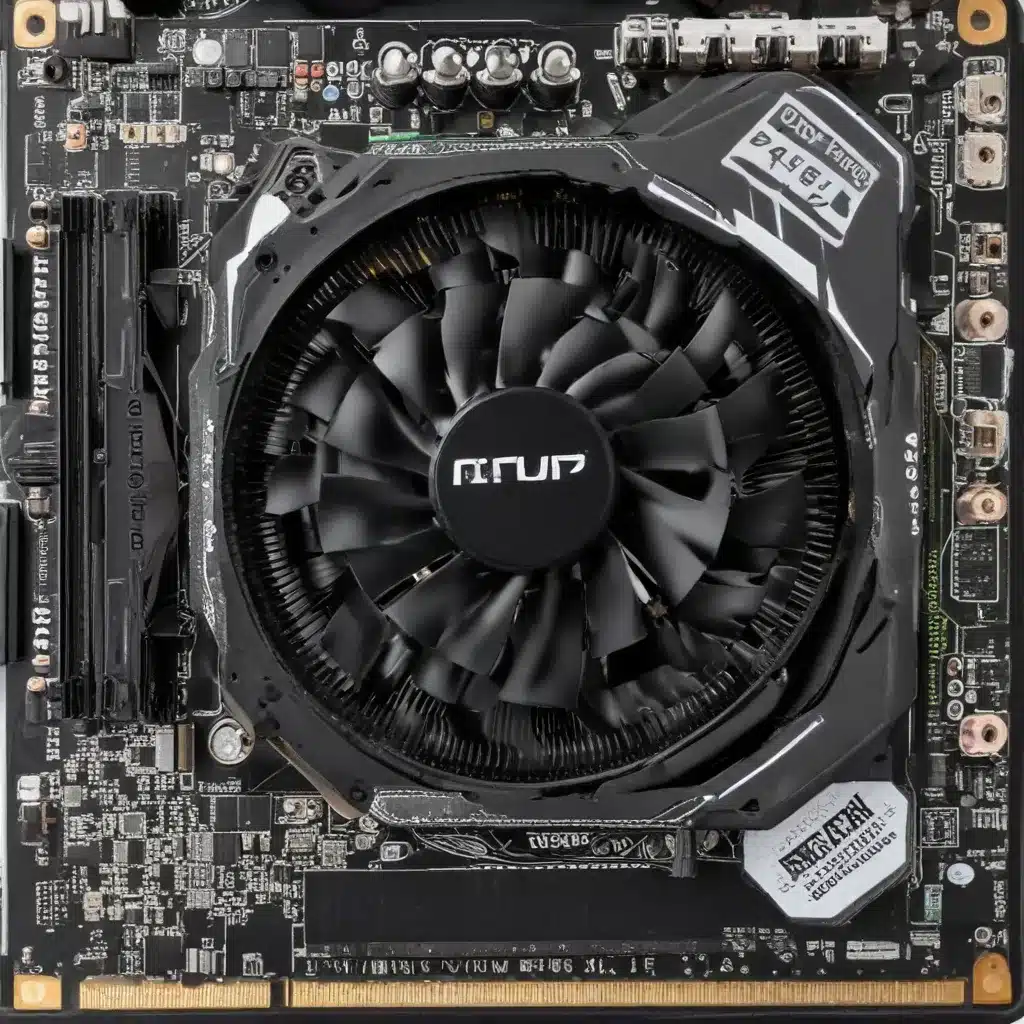
Laptops with multiple graphics processing units (GPUs) can be a powerful combination, but they can also present unique challenges when it comes to troubleshooting and optimizing performance. In this comprehensive guide, we’ll delve into the common issues associated with laptop GPU and discrete graphics card malfunctions, and provide practical solutions to help you get your system back on track.
Identifying the Problem: Symptoms and Causes
When dealing with GPU-related issues on laptops, the most common symptoms you may encounter include:
- Black Screens: Sudden and unexplained black screens, especially when switching between graphics modes or launching certain applications.
- Brightness Inconsistencies: Brightness levels that remain at a fixed, maximum setting, ignoring any adjustments made through software or hardware controls.
- Performance Degradation: Noticeable drops in game or application performance, even with a dedicated graphics card.
- Incompatible Drivers: Conflicts or missing features in the graphics driver software, preventing you from accessing critical settings and features.
These issues can stem from a variety of causes, such as:
- Driver Conflicts: Incompatibilities between the installed graphics drivers and the system configuration.
- Hardware Malfunctions: Faulty or outdated GPU components, including the discrete graphics card or the integrated graphics chip.
- Power Management Issues: Incorrect power settings or conflicts between the CPU and GPU, leading to performance problems.
- BIOS and Firmware Compatibility: Outdated or incompatible BIOS or firmware that fails to properly manage the GPU and system resources.
Understanding the underlying causes is crucial for effectively troubleshooting and resolving these problems.
Troubleshooting Strategies
To address the various GPU-related issues on your laptop, consider the following troubleshooting steps:
1. Update Drivers and Software
Ensure that you have the latest, compatible graphics drivers installed on your system. This can be achieved by:
- Visiting the manufacturer’s website (e.g., Intel, NVIDIA, or AMD) and downloading the appropriate driver package for your specific laptop model and GPU.
- Using the manufacturer’s driver update utility or software, if available, to automatically detect and install the latest driver version.
- Uninstalling the existing drivers using a tool like Display Driver Uninstaller (DDU) before installing the new ones to prevent conflicts.
Additionally, check for any available BIOS or firmware updates from your laptop manufacturer, as these may address GPU-related compatibility issues.
2. Manage Power Settings
Incorrect power settings can sometimes contribute to GPU malfunctions or underperformance. Ensure that your laptop’s power plan is set to “High Performance” or a similar mode that prioritizes GPU utilization.
You can also try adjusting the power management settings for your dedicated GPU through the manufacturer’s control panel (e.g., NVIDIA Control Panel, AMD Radeon Settings) or through the Windows Power Options.
3. Disable Secure Boot (if applicable)
Some users have reported issues with GPU functionality when Secure Boot is enabled on their laptops. Try temporarily disabling Secure Boot in the BIOS and see if that resolves the problem. Remember to re-enable Secure Boot once the issue is fixed, as it is an important security feature.
4. Perform a Clean GPU Driver Installation
If the previous steps do not resolve the issue, try performing a clean installation of the GPU drivers. This involves:
- Uninstalling the existing graphics drivers using a tool like DDU.
- Rebooting your laptop in Safe Mode.
- Installing the latest, compatible GPU drivers from the manufacturer’s website.
This clean installation approach can help eliminate any lingering driver conflicts or corrupted files that may be causing the problems.
5. Check for Hardware Issues
If the software-based troubleshooting steps do not yield a solution, it’s possible that you are facing a hardware-related issue with your laptop’s GPU or discrete graphics card. In such cases, you may need to:
- Ensure that the discrete graphics card is properly seated in the laptop’s expansion slot.
- Check for any physical damage or overheating issues with the graphics card or its cooling system.
- Consult with a qualified technician or the laptop manufacturer for further diagnostic tests and potential hardware replacement.
Optimizing GPU Performance
Once you’ve resolved the underlying issues, you can take steps to optimize the performance of your laptop’s GPU and discrete graphics card:
1. Utilize GPU Profiles and Settings
Leverage the manufacturer’s GPU control panel (e.g., NVIDIA Control Panel, AMD Radeon Settings) to customize and fine-tune your graphics settings, such as:
- Power Management Mode: Set the mode to “Prefer Maximum Performance” for optimal GPU utilization.
- Multi-GPU Configuration: Ensure that your laptop’s multiple GPUs are properly configured and utilized by the applications you use.
- Game-Specific Settings: Adjust individual game settings to take advantage of your discrete graphics card’s capabilities.
2. Enable GPU Scaling and Upscaling
If you encounter issues with certain games or applications not properly scaling or upscaling to your laptop’s native display resolution, try enabling GPU-powered scaling and upscaling features. These can be found in the manufacturer’s GPU control panel and may include options like:
- Supersampling: Renders the game at a higher internal resolution before downscaling to the native display, improving image quality.
- Dynamic Super Resolution: Dynamically adjusts the render resolution to maintain optimal performance while enhancing visual fidelity.
- Integer Scaling: Provides a pixel-perfect scaling solution, preserving image sharpness without introducing unwanted artifacts.
3. Monitor Thermals and Cooling
Ensure that your laptop’s cooling system is functioning correctly and that the GPU is not overheating. Consider the following steps:
- Maintain Proper Ventilation: Keep the laptop’s air vents clear and unobstructed to allow for efficient heat dissipation.
- Use Cooling Pads or Stands: Invest in a dedicated cooling pad or stand to improve airflow and reduce GPU temperatures.
- Adjust Fan Speeds: Use the manufacturer’s software to manually control the GPU’s fan speeds, if available, to prevent thermal throttling.
By following these troubleshooting strategies and optimization techniques, you can effectively resolve GPU-related issues on your laptop and unlock the full potential of your system’s graphics capabilities.
Remember, if the problems persist or you encounter any hardware-related concerns, it’s always best to consult with a qualified IT professional or the laptop manufacturer for further assistance.












